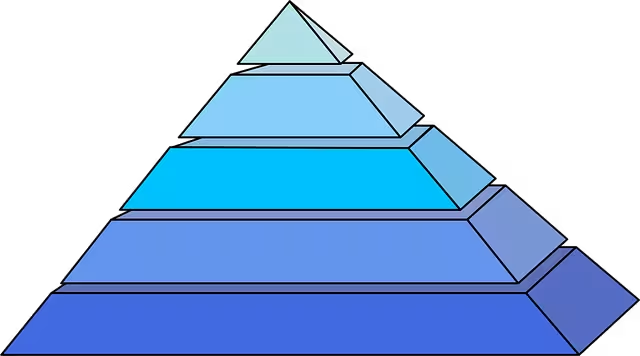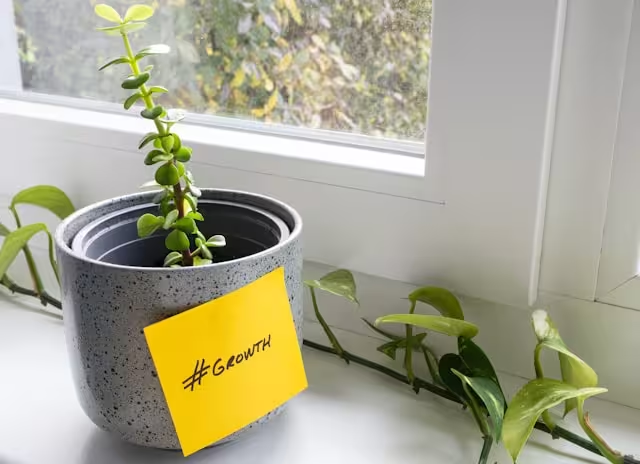A hashtag is not metadata. It is not an afterthought. In the digital ecosystem of 2025, a hashtag is an active search query. It is a powerful content categorization tool used by algorithms on Instagram, LinkedIn, and even by Google to determine topical relevance. For a niche as vital and technical as biophilic design, using the wrong strategy is a critical waste of resources.
The common problem is saturation. Many designers and architects create brilliant work, post it online, and use a generic, high-volume hashtag like #design or #architecture. This content is then lost in a sea of millions of other posts, failing to reach its intended audience. This results in a low ROI, or Return onInvestment, for your digital marketing efforts.
This article moves beyond simple lists. It provides a strategic framework for selecting and implementing the best biophilic design hashtags. In this article, we will analyze how to group a hashtag with other related tags, how to use a specific hashtag to find clients versus followers, and how to build a data-driven system. This guide will help you improve discovery, increase engagement, and build measurable search authority for your work. Your hashtag selection must be as deliberate as your design choices.
Table of Contents
The Biophilic Hashtag Ecosystem: A Tiered Volume Analysis

To create a functional strategy, we must first analyze the ecosystem. Not every hashtag is created equal. We can organize them into tiers based on their search volume (the number of posts associated with them). This “tiered” approach allows you to balance broad discovery with a targeted, specialized reach. Think of it as choosing the right tool for the job. You would not use a sledgehammer to hang a picture, and you should not use a hashtag with 10 million posts to find a specific client.
Tier 1: High-Traffic (Broad-Reach) Tags (Volume: 500k – 5M+ Posts)
These are the foundational, high-volume terms. They are the “stadiums” of the hashtag world.
- Examples:
#biophilicdesign,#biophilia,#sustainabledesign,#greenarchitecture,#wellnessdesign,#interiordesign - Analysis: The primary hashtag
#biophilicdesignitself is in this tier. It is essential for identifying your content to the algorithm at the broadest level. However, because it is so broad, your content will only be visible on the “recent” tab for a few moments before being buried by new posts. The hashtag#biophiliais even broader, often including biology, nature photography, and academic papers. - Strategy: You must use 1-2 of these high-traffic tags on every post. This is your “entry fee” for the algorithm. It tells the platform, “This post is, in the broadest sense, about biophilic design.” This is not a hashtag meant to connect you with a client; it is meant to teach the algorithm what your account is about. Do not only use this tier of hashtag. That is the most common mistake.
Tier 2: Niche-Specific (Targeted) Tags (Volume: 50k – 500k Posts)
This is the “sweet spot” for growth, engagement, and client discovery. This is where your true audience lives.
- Examples:
#biophilicinteriors,#naturalmaterials,#restorativedesign,#healthybuildings,#biophilicoffice,#natureinthehome,#biophilicliving - Analysis: These terms are specific enough that the users searching for them have a high-intent. A person searching the hashtag
#biophilicinteriorsis not a casual browser; they are actively looking for examples and professionals in that specific field. The hashtag#healthybuildingsconnects you to a professional audience of facility managers, HR professionals, and architects. - Strategy: Use 3 to 5 of these niche-specific tags per post. This tier is your workhorse. This hashtag group does the heavy lifting of sorting your content and placing it in front of people who are already looking for it. When you post a project, analyze it and pull the specific concepts. Is it an office? Use
#biophilicoffice. Does it feature a specific wood-and-stone palette? Use#naturalmaterials. This is where your strategy becomes targeted.
Tier 3: Hyper-Niche & Conceptual Tags (Volume: <50k Posts)
These are the expert-level tags. They are used to signal deep knowledge, capture very specific long-tail searches, and connect with other experts, academics, and designers.
- Examples:
#14patternsofbiophilicdesign,#biophilictextures,#natureofspace,#biomorphicpatterns,#prospectandrefuge,#visualconnectionwithnature - Analysis: Many of these tags are technical terms. The hashtag
#14patternsofbiophilicdesignrefers directly to the foundational framework published by Terrapin Bright Green. Using this hashtag signals that you are not just an amateur but a professional who understands the science. The hashtag#prospectandrefugeis a specific spatial concept. - Strategy: Use 2 to 3 of these hyper-niche tags. This is not about getting thousands of likes. This is about building authority. When another architect or a potential client who has done their homework sees you using this hashtag, it builds immediate trust. It shows you understand the theory behind the practice. This type of hashtag is also excellent for finding and engaging with peers and industry leaders.
Semantic Clustering: Integrating LSI Keywords for Topical Authority
This is the most advanced and critical section of your new hashtag strategy. “Semantic Clustering” is a concept borrowed from Google’s SEO. In simple terms, it means that search algorithms are now smart enough to understand groups of topics.
Algorithms do not just read one hashtag. They analyze your entire list of hashtags to understand the post’s full context. Latent Semantic Indexing (LSI) is the principle that topics are related. For example, “biophilic design” is related to “natural light,” “living walls,” and “air quality.”
Your goal is to stop using a random list of hashtags and start using intelligent clusters. You can build these clusters around the core pillars of biophilic design.
“What are the 3 pillars of biophilic design?”
The accepted framework identifies three core pillars, or categories, of biophilic design.5 We can use these pillars to build our hashtag clusters.
Cluster 1: Direct Experience (Nature in the Space)
This pillar involves the real, direct presence of nature. This includes plants, light, water, and animals. It is the most commonly understood part of biophilic design.
- LSI Concepts: Natural light, living walls, interior landscaping, water features, air quality, natural ventilation.
- Hashtag Cluster Example: When you post a project that features a new atrium with a water feature and plants, do not just use one hashtag. Use a cluster that describes the entire concept.
#livingwall(Tier 2)#plantdesign(Tier 2)#waterfeature(Tier 2)#naturallight(Tier 2)#visualconnectionwithnature(Tier 3)#biophilicdesign(Tier 1)
- Analysis: This group of hashtags tells the algorithm a complete story. It says, “This post is about biophilic design, specifically its use of living walls, natural light, and water features, which all relate to the expert concept of ‘visual connection with nature’.”
Cluster 2: Indirect Experience (Natural Analogues)
This pillar involves representations of nature. These are human-made designs that mimic the patterns, forms, textures, and elements of the natural world.
- LSI Concepts: Biomorphic patterns, natural materials, restorative color palettes, wood grain, stone, natural fibers, fractal patterns.
- Hashtag Cluster Example: You are posting a “flat lay” of your material palette for a new project. It includes reclaimed wood, wool carpet, and stone.
#naturalmaterials(Tier 2)#biomorphicpatterns(Tier 3)#naturaltextures(Tier 2)#biophilictextures(Tier 3)#wooddesign(Tier 2)#sustainabledesign(Tier 1)
- Analysis: This cluster targets users who are specifically interested in the materials and patterns of design. A designer searching for
#naturaltexturesis a high-value audience member. You have captured them by clustering your hashtags semantically.
Cluster 3: Spatial Experience (Nature of the Space)
This is the most complex pillar. It refers to how we feel in a space, using concepts from nature to create feelings of safety, intrigue, or openness.
- LSI Concepts: Prospect and refuge, complexity and order, sense of place, mystery, risk/peril.
- Definition: The most famous concept here is “Prospect and Refuge.” “Prospect” is a high, open vantage point (like a vista). “Refuge” is a small, safe, enclosed space (like a cave or a cozy booth). Biophilic design combines these to create spaces that feel both safe and expansive.
- Hashtag Cluster Example: You design a hospital waiting room with an open view of a courtyard (prospect) but also include high-backed chairs in quiet corners (refuge).
#prospectandrefuge(Tier 3)#senseofplace(Tier 3)#restorativeenvironments(Tier 2)#restorativedesign(Tier 2)#evidencebaseddesign(Tier 3)#wellnessdesign(Tier 1)
- Analysis: This cluster is highly technical. It will attract very few casual “likes.” However, it will attract hospital administrators, healthcare designers, and other professionals who are searching for data-driven, evidence-based design. This single hashtag cluster can be more valuable for your business than a hundred generic posts.
Entity & Adjacent-Industry Integration (Advanced Strategy)
The next layer of your strategy is to connect your content to the wider digital conversation. You do this by tagging recognized “entities” (people, organizations, and standards) and “adjacent” topics. This expands your reach beyond those just searching for biophilic design.
Key Entities (People & Organizations)
An entity is a “thing” that a search engine like Google or Instagram recognizes. By tagging or mentioning these entities, you align your content with their established authority.
- Why: Tagging an entity is like joining their digital “room.” People who follow these entities will be recommended your content.
- Examples:
#EOWilson: Edward O. Wilson, the Harvard biologist who popularized the “Biophilia Hypothesis” in his 1984 book. Tagging him connects your post to the scientific origin of the field.#StephenKellert: The late Stephen R. Kellert, a Yale professor who, with E.O. Wilson, co-founded the concept. He is a critical figure in biophilic design.#OliverHeath: A prominent biophilic designer and speaker. Using this hashtag connects you to his large, engaged public audience.#TerrapinBrightGreen: The consulting firm that published the “14 Patterns of Biophilic Design,” a foundational text. This is a crucial entity tag for any professional.
- Strategy: When writing a post, ask: “Does this relate to one of the 14 patterns?” If yes, add the
#14patternsofbiophilicdesignand#TerrapinBrightGreenhashtag.
Key Certifications & Movements (Entities)
This group of entities is critical for B2B (business-to-business) communication. Your clients (architects, builders, corporations) are not just searching for “pretty designs.” They are searching for solutions that meet high-performance standards.
- Why: These hashtags capture an audience interested in professional application, building standards, and ROI.
- Examples:
#WELLcertified/#WELLBuildingStandard: This is one of the most important standards for human health in buildings. Biophilic design is a major component of WELL certification. This single hashtag connects you to a global audience of high-value professionals.#LivingBuildingChallenge: An even more rigorous green building certification that mandates biophilia.#healthybuildings: A broader movement and hashtag that includes biophilia, air quality, and materials.
- Strategy: If your design project helped a client achieve (or is aligned with) WELL standards, that is a critical piece of information. The
#WELLcertifiedhashtag is essential.
Adjacent Niches
This is how you find a new audience. These are topics that are closely related to biophilic design, but whose followers might not know the term yet.
- Why: You are introducing your solution to an audience that is already looking for it, even if they use different words.
- Examples:
#neuroarchitecture: This is a rising field studying how brains and bodies respond to the built environment. Biophilic design is a huge part of neuroarchitecture.#evidencebaseddesign: A term used heavily in healthcare, showing that design decisions are backed by data.#healthyinteriors: A more common hashtag for residential designers.#corporatewellness: A term used by HR departments. This hashtag connects your office design post to the HR manager who is looking for ways to improve employee health. This is a direct line to a paying client.
Platform-Specific Application — “How do you tag biophilic design?”
Your hashtag strategy is not one-size-fits-all. The algorithm and user intent are different on Instagram, LinkedIn, and your own website. You must adapt your implementation for each platform.
Instagram & Pinterest (Visual Search Algorithms)
- Platform Goal: Visual discovery, inspiration, and community building.
- Strategy: This is where the 3-Tier System and Semantic Clustering shine. The audience is open to discovery.
- Technical Tip: The standard advice is to use a mix. My direct recommendation is a 9-tag formula for success:
- 2 High-Traffic Tags (e.g.,
#biophilicdesign,#interiordesign) - 4 Niche-Specific Tags (e.g.,
#biophilicinteriors,#naturalmaterials,#biophilicoffice,#plantdesign) - 3 Hyper-Niche / Entity Tags (e.g.,
#prospectandrefuge,#WELLcertified,#neuroarchitecture)
- 2 High-Traffic Tags (e.g.,
- Placement: Place your hashtag list in the first comment immediately after posting. This keeps your caption clean and focused on the message, while still providing the full algorithmic benefit. The algorithm picks up the list in the first comment just as effectively as it does in the caption.
LinkedIn (Professional & B2B Search)
- Platform Goal: Professional networking, B2B lead generation, and establishing expertise.
- Strategy: On LinkedIn, your hashtag choice must be 100% focused on outcomes and business. No one on LinkedIn is casually browsing for inspiration. They are looking for solutions.
- Technical Tip: Use fewer hashtags (3-5 is optimal) and make them count. Focus on Tier 2 (Niche) and Entity tags.
- Example Post Concept:
- Post: A case study of an office redesign.
- Caption: “Our biophilic redesign of XYZ Corp’s headquarters led to a 15% reduction in absenteeism and a 20% increase in self-reported well-being. This is the power of human-centered design.”
- Hashtag List:
#corporatewellness,#healthybuildings,#employeeengagement,#biophilicoffice,#WELLBuildingStandard.
- Analysis: Notice the hashtag list is all about the business results. You are not trying to attract other designers; you are trying to attract your next client.
Website Blog/SEO (Topical Authority)
- Platform Goal: To establish your website as an authority on the topic of biophilic design so that Google ranks you #1 for relevant search queries.
- Strategy: This is the most important distinction. On your own website blog, you do not use a hashtag. Instead, you use the concept behind the hashtag as your content structure.
- Technical Tip: Google does not care about the “#” symbol. It cares about the topic.
- Your Niche hashtag
#biophilicinteriorsdoes not go on your blog post. - Instead,
#biophilicinteriorsbecomes the main keyword for an entire 2,000-word blog post. - Your Tier 3 hashtag
#prospectandrefugebecomes an H2 subheading in an article about spatial design. - Your LSI cluster for “Natural Analogues” (e.g.,
#naturalmaterials,#biomorphicpatterns) becomes a section in that article, complete with high-quality images and alt-text.
- Your Niche hashtag
- Analysis: This is how you build true, long-term Topical Authority. You are proving to Google that you are an expert not just on “biophilic design,” but on all the semantic, adjacent, and niche topics that surround it. Your social media hashtag strategy is just a reflection of your deeper website content strategy.
Hashtags as a Data-Driven Design Tool

We must stop treating the hashtag as a decoration. A hashtag is a data point. It is a tool for search, classification, and connection.
A successful content strategy does not rely on guesswork or copying the hashtag list from a competitor. The best biophilic design hashtags are selected through a data-driven system.
This system is built on:
- Tiered Analysis: Balancing high-traffic tags for discovery with niche-specific tags for engagement.
- Semantic Clustering: Grouping your list into logical, topical clusters to tell the algorithm a complete story.
- Entity Integration: Aligning your content with recognized experts and standards to build authority.
- Platform-Specific Use: Adapting your hashtag selection for the specific goals of Instagram, LinkedIn, or your own website’s SEO.
Your biophilic design work is innovative, competent, and creative. Your digital strategy must be, too.
Final Call-to-Action: Audit your last three social media posts. Recategorize your current hashtag list using the 3-Tier and Semantic Cluster systems outlined above. Monitor the change in your engagement, reach, and, most importantly, the quality of your new followers and inquiries over the next 30 days. The data will speak for itself.
